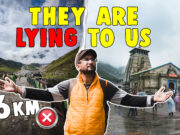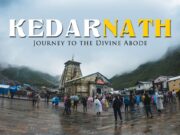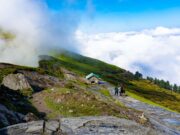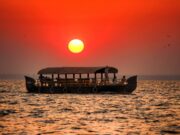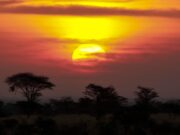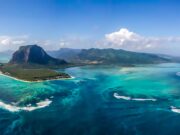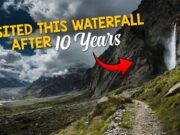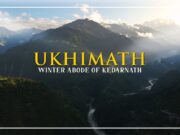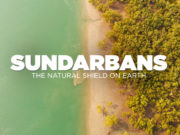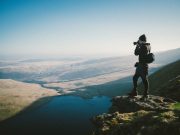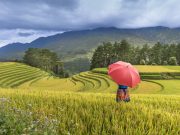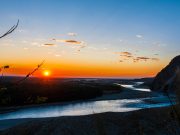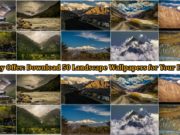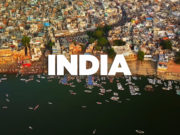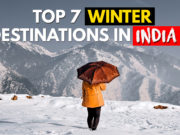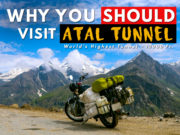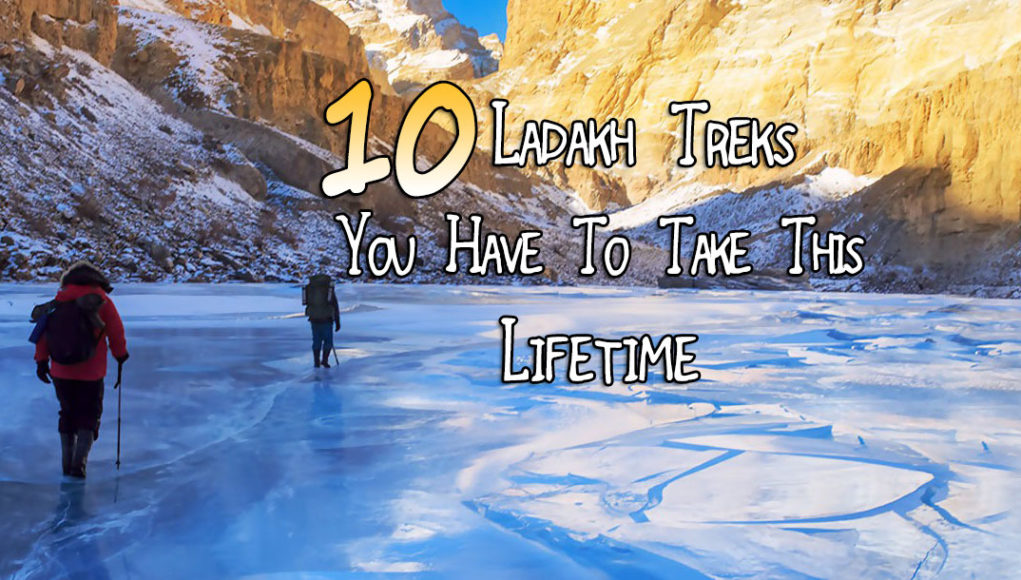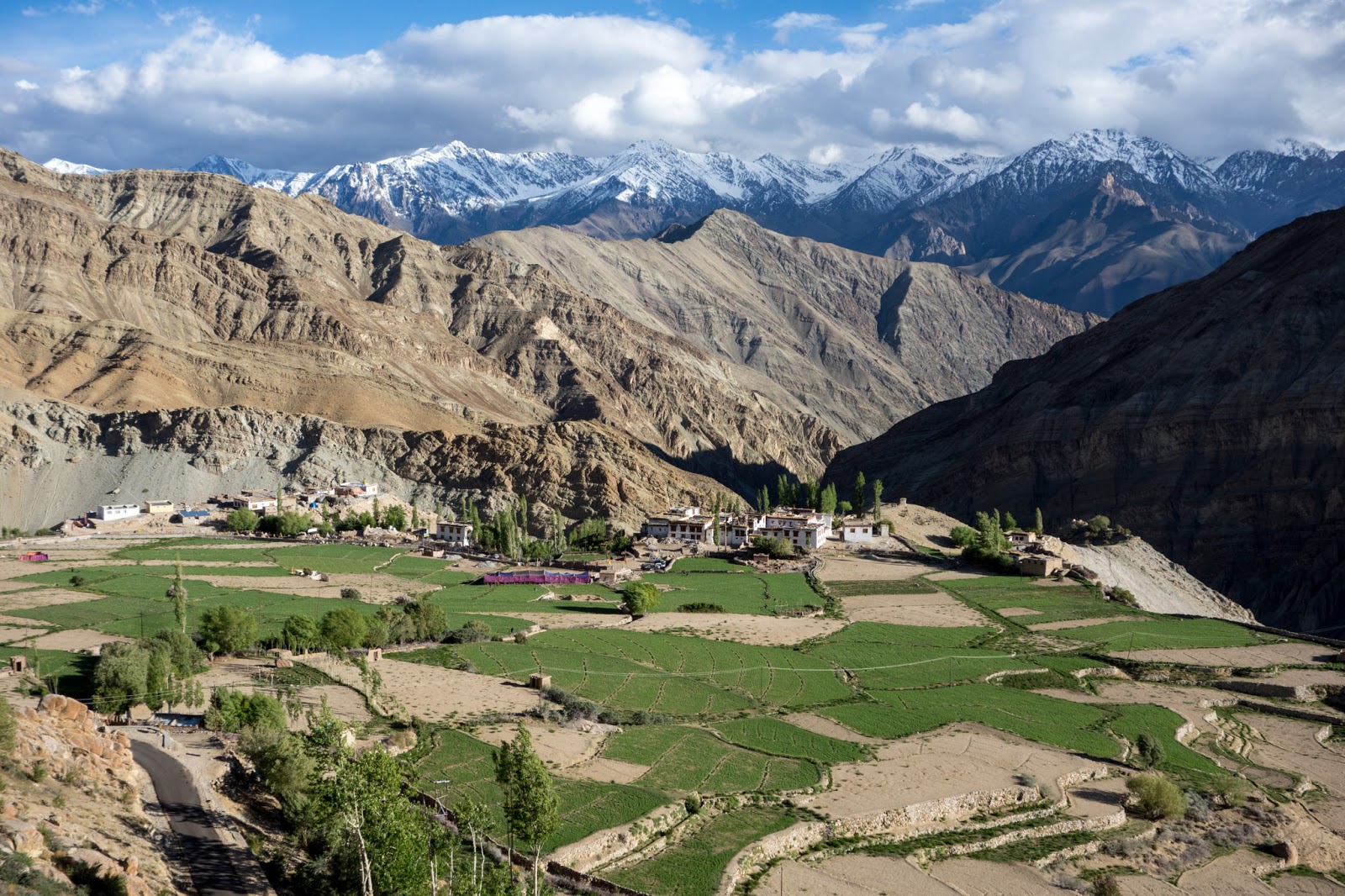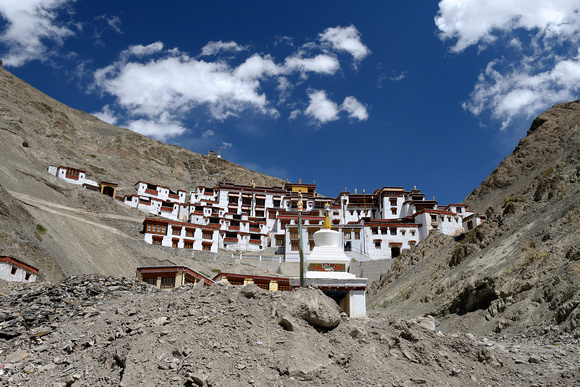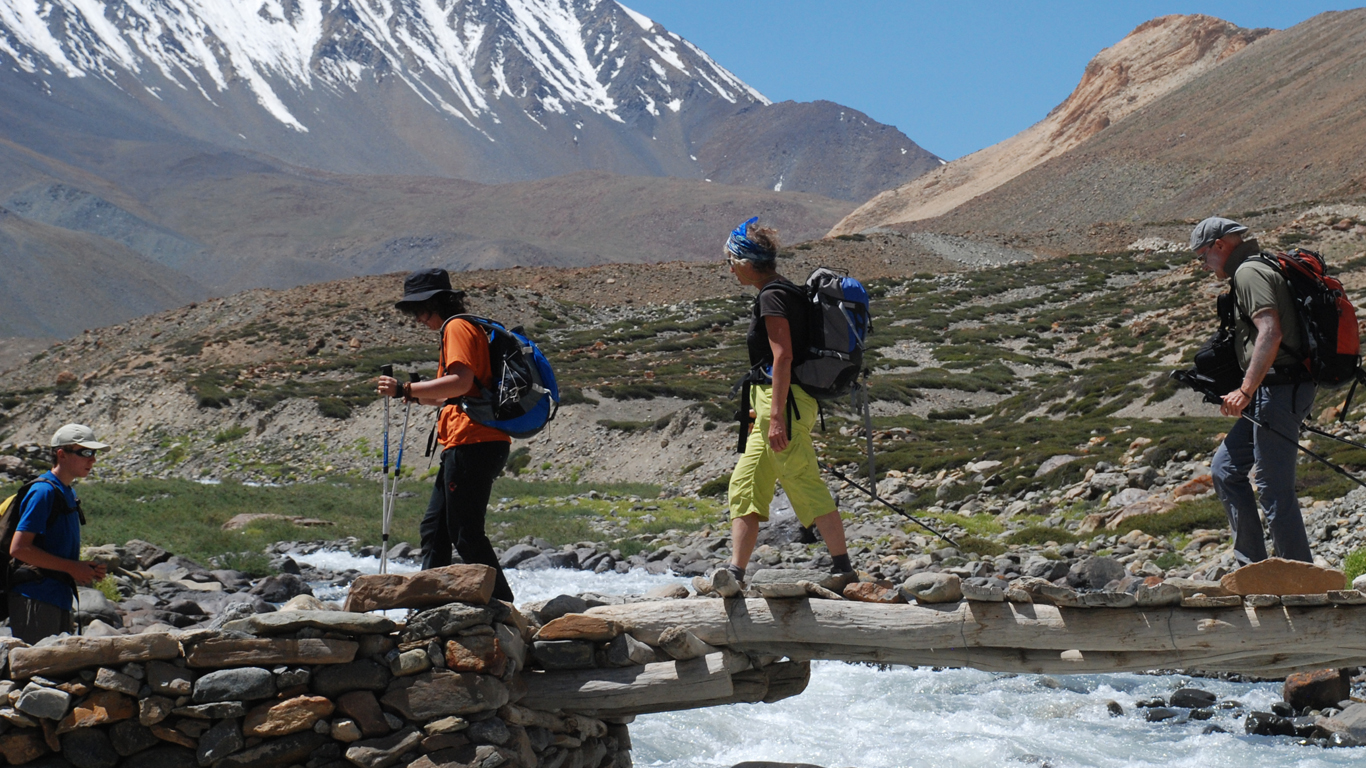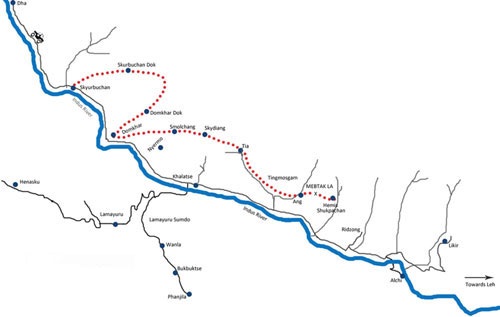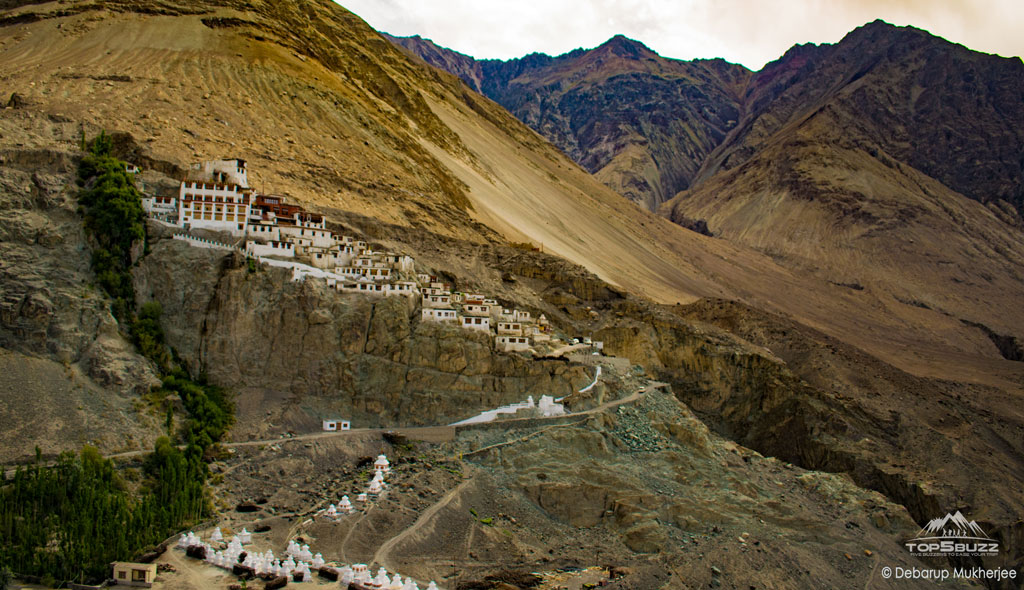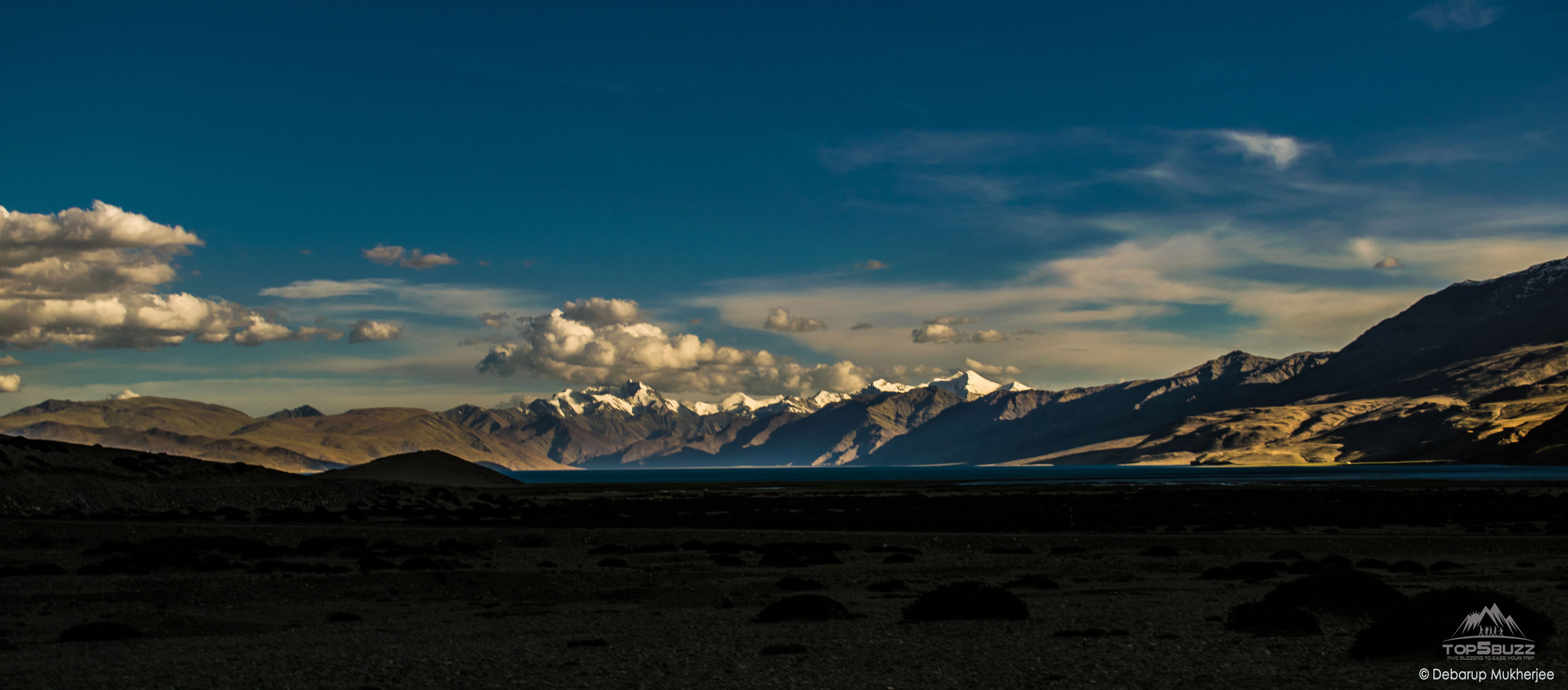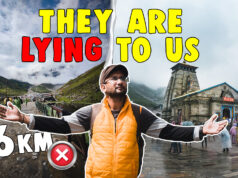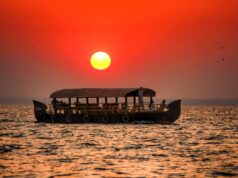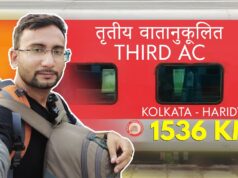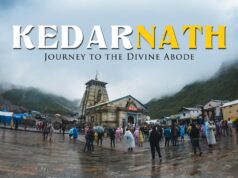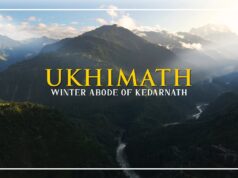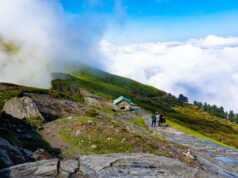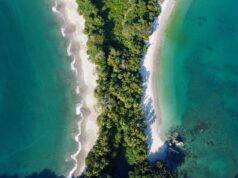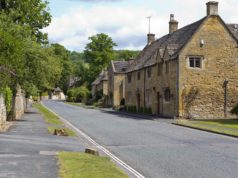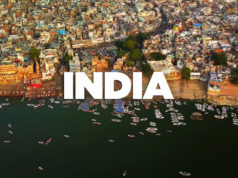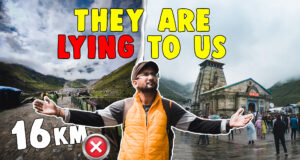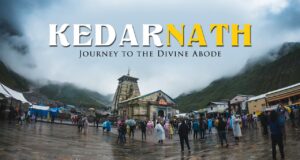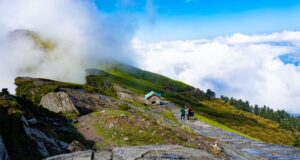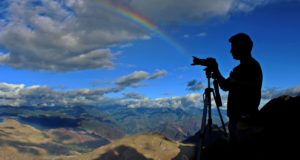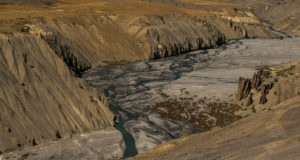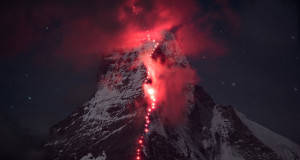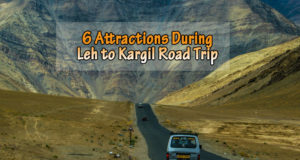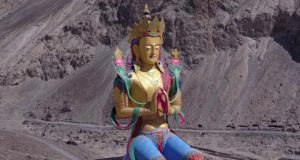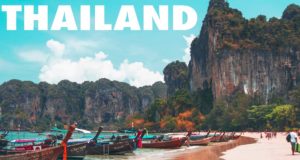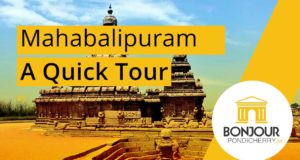Chasing angels or fleeing demons, go to the mountains. When one get to the mountains you are bombarded by a plethora of feelings. Awestruck and bewilderment was what hit me. Looking at the sheer size of the mountains made me feel inconsequential in the scheme of things. For a moment I felt like that all my troubles and the excess baggage I had carried didn’t exist. And this was when I hadn’t even started trekking. Trekking in the Himalayas is a surreal experience. Unlike trails in Nepalese Himalayas,trails of the Indian Himalayas are still relatively unexplored. This makes the trekking in the trails a gratifying and formidable experience both at the same time. Among Indian trails those of the
Ladakh region are still relatively untouched and unexplored owing to the remoteness of Ladakh.
But this shouldn’t be a cause of worry as the locals of these areas are more than willing to help you out.
1. Sham Valley Trek
This is a trek for the green horns of trekking. Sham valley is also known as the “Apricot Valley”, named after the Apricot Flowers that blossom in the valley during the winters.
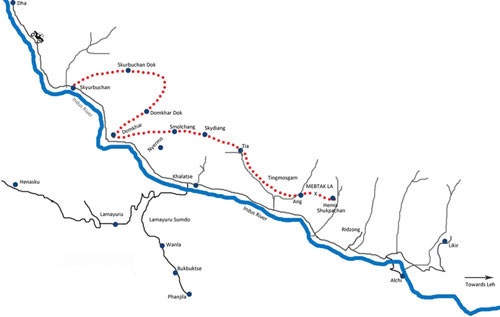 Source: dragontours.in
Source: dragontours.in
- The trek starts from a place called Likir which is 57 kms from Leh.
- Sham Valley Trek leads off to Yangthang after a gradual descend to Phobe La at 3,580 meters from Likir and thereafter heads up to Chagatse La, which is at an elevation of 3,630 meters.
- The Rizong Monastery that lies about an hour’s distance from Yangthang is one of the major attractions on this trek.
- The trek from Yangthang maneuvers to Hemis Shukpachan across Tsermangchan La, which is at a height of 3,750 meters.
- Further one will come across several sparkling streams surrounded by shady willows and large barley fields that provide a touch of green to the otherwise desolate Mountains.
- The trail thereafter ascends between two hillocks to the west until it veers south and climbs steeply up to the Mebtak La at 3750 meters dotted with prayer flags.
- From the pass the journey to Ang, which ushers with apricot orchards, swerve through a gorge. Finally, from Ang we pass we reach Temisgang.
- The Leh Sri Nagar Highway is just a 2 hour hike from Temisgang place from where the taxis will transport you to Leh.
2. Indus Valley Trek
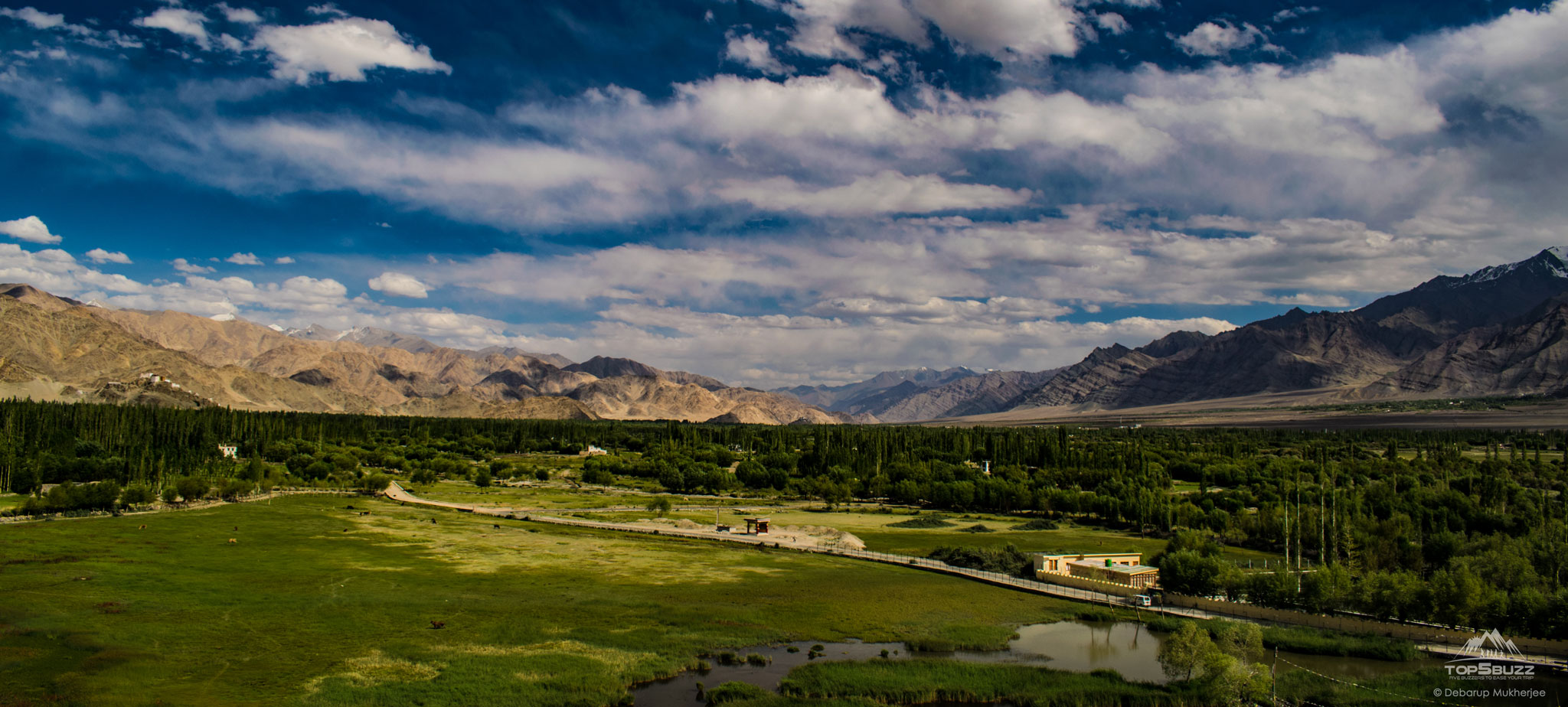 The Indus Valley is contiguous with territories of Pakistan, Afghanistan and China. It is the largest valley of Ladakh region of Jammu and Kashmir state of India and is formed Indus River, which flows towards Pakistan. The valley covers the regions of Leh, Skardu and the vast glaciers-covered beyond area extending into China’s territory. This valley consists of extensively spread undulating lands.
The Indus Valley is contiguous with territories of Pakistan, Afghanistan and China. It is the largest valley of Ladakh region of Jammu and Kashmir state of India and is formed Indus River, which flows towards Pakistan. The valley covers the regions of Leh, Skardu and the vast glaciers-covered beyond area extending into China’s territory. This valley consists of extensively spread undulating lands.
Source: dragontours.in
- The Indus valley trek takes the same route as mentioned above in the Sham valley trek up to Yanthang.
- After a tiny pass, one will descend towards Hemis Shukpachan.
- After an overnight stay at Hemisc Shukpachan we shall head over to Temisgang. This part of the trail has been carved out from the ochre rocks into a balcony. We climb towards two passes and arrive at Ang.
- After a brief rest at Ang we head on to Temisgang, ancient capital of the Sham Kingdom, and its monastery.
- From Temisgang we head over Bongbong la and finally Khalise.
- From Khalise one can take a jeep and head to Lamayuru.
*In case time permits a short stop over at Wanlah is recommended.
3. Spituk to Stok Trek
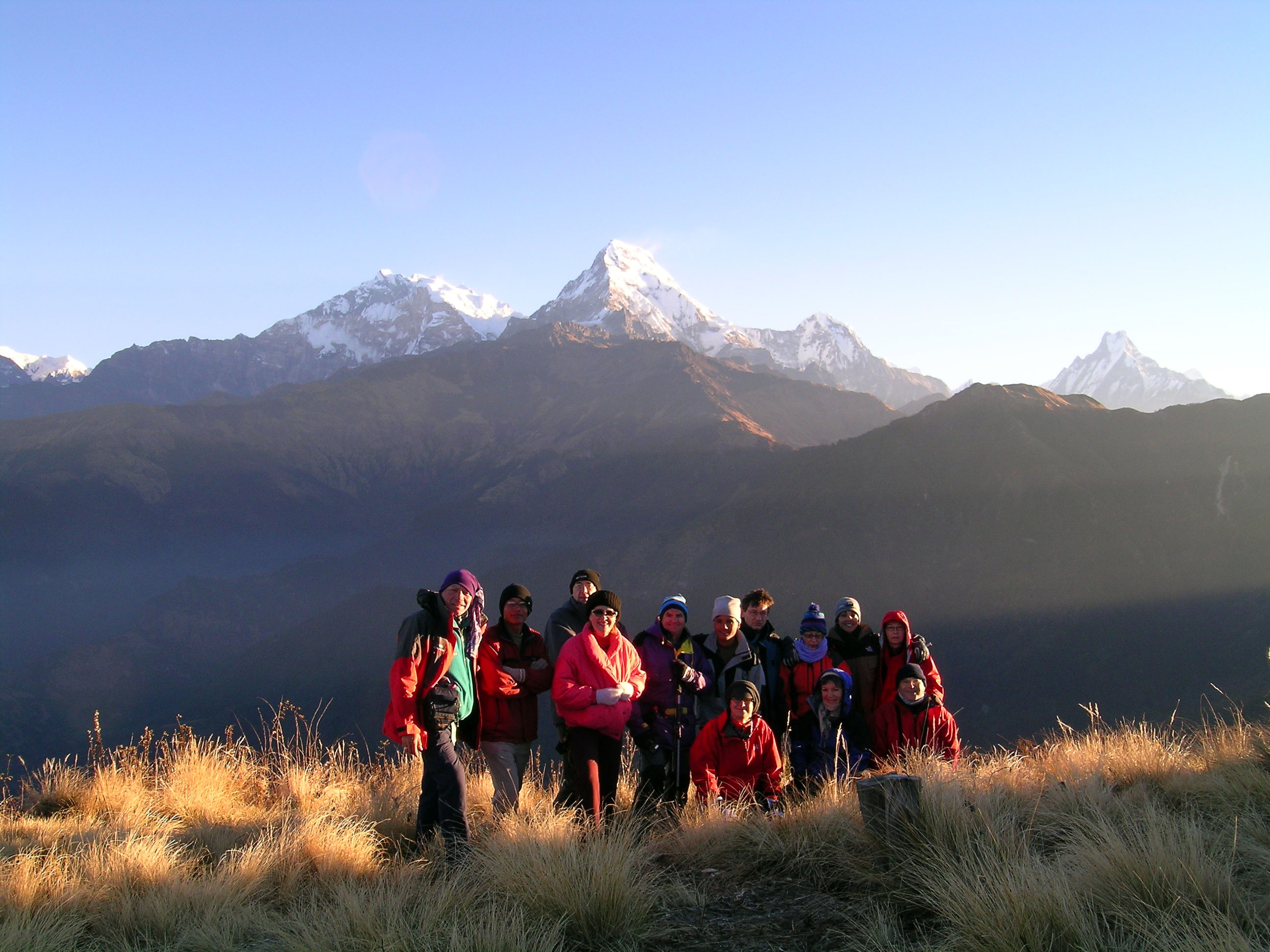 This is less of a trek and more of hike. Spituk to Stok trek is a trek for all those nature aficionados out there.
This is less of a trek and more of hike. Spituk to Stok trek is a trek for all those nature aficionados out there.
- The starting point of this trek is from Phey bridge over the River Indus.
- Cross the bridge and walk towards the Zingchen Gorge.
- After two hours of winding along the Indus River the path turns southwards into a gorge.
- From there one will arrive at Zingchen after hiking for about 30 minutes.
- There’s a restaurant where one can stop for tea and snacks
- As you continue trekking further, the gorge gets narrower and rugged. On the way, you might see snow leopard signs along the valley, bottom of the side valleys if you are trekking during winter or early spring/fall.
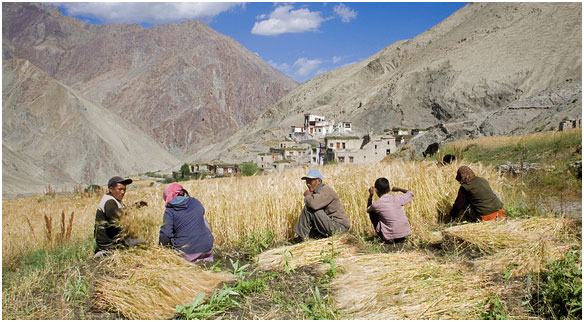
- As you approach Rumbak fields the valley suddenly opens up with snow capped mountains in the background.
- From the fields, the path turns left eastwards for the Rumbak village, where various home stay options are available.
- After resting overnight one should proceed for a full day wildlife viewing along with a trained local guide.
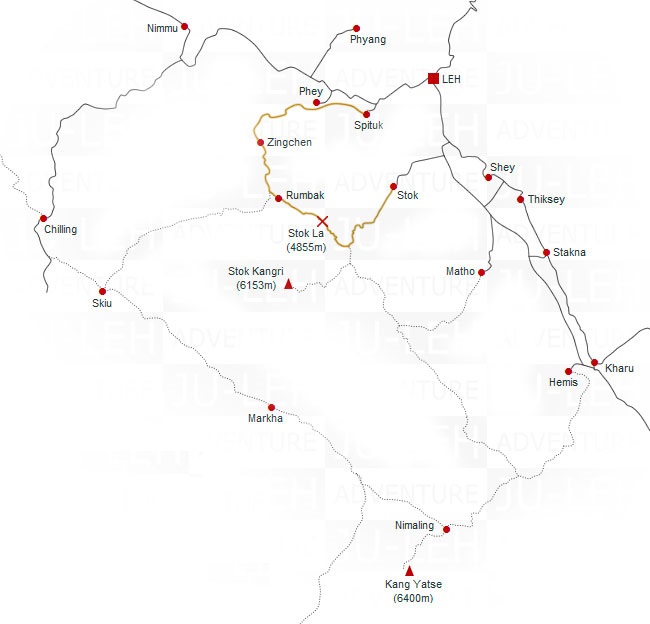 Source: ju-lehadventure.com
Source: ju-lehadventure.com
Wildlife viewing possibilities are Blue sheep, the Great Tibetan sheep or the Argali and migratory birds. Occasionally a Tibetan Wolf or a Snow leopard may be spotted if lady luck favors you.
- After resting overnight at the home stay one should start early for the trek up the Stok la pass which will take you to an elevation of 4900 meters.
- You have to follow the path on the extreme left along the south facing hillside.
- After an hour the path gets slower as you start climbing up to the pass. On reaching, you can get great views of the Indus valley.
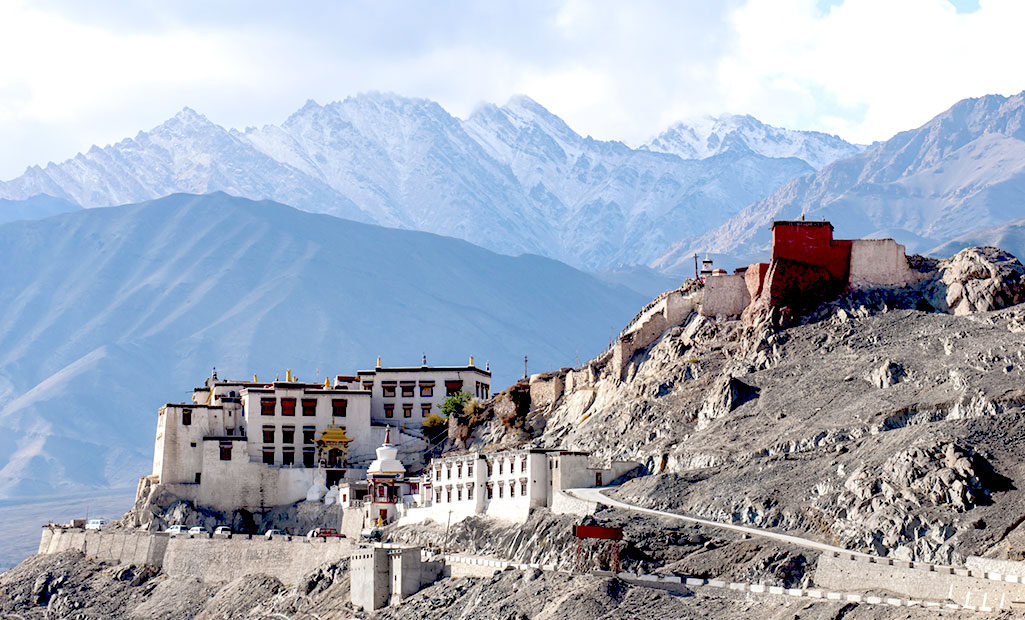
- Descend all the way down to the village of Stok where you can visit the Stok Palace museum.
From Stok you will have to board a bus or jeep back to Leh.
4. Markha Valley Trek
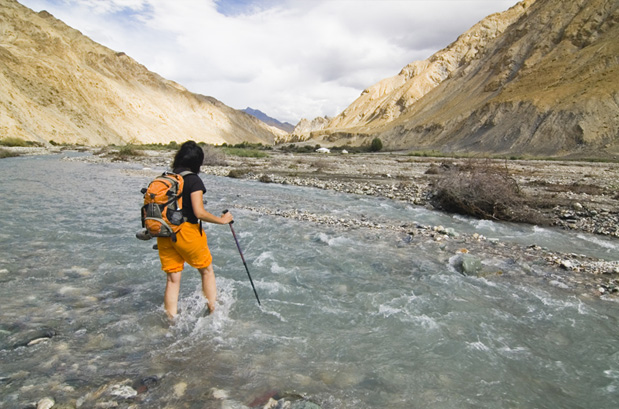 Apart from the striking contrast of trekking in an arid cold desert valley, the Markha Valley trek offers one an outstanding view of Ladakh and Zanskar ranges, the 21,000 feet Kang Yissay and the 20,086ft Stok Kangri peaks. The trek passes the beautiful and relatively untouched Hemis National Park and involves two pass crossings- Gandala La (15748 ft) and Kongmaru La, (17,060 ft).
Apart from the striking contrast of trekking in an arid cold desert valley, the Markha Valley trek offers one an outstanding view of Ladakh and Zanskar ranges, the 21,000 feet Kang Yissay and the 20,086ft Stok Kangri peaks. The trek passes the beautiful and relatively untouched Hemis National Park and involves two pass crossings- Gandala La (15748 ft) and Kongmaru La, (17,060 ft).
Some exciting waist-deep river crossing sections on Markha River to trails going across interesting Buddhist villages and rocky canyons are some of the features that give this trek a unique fervor.
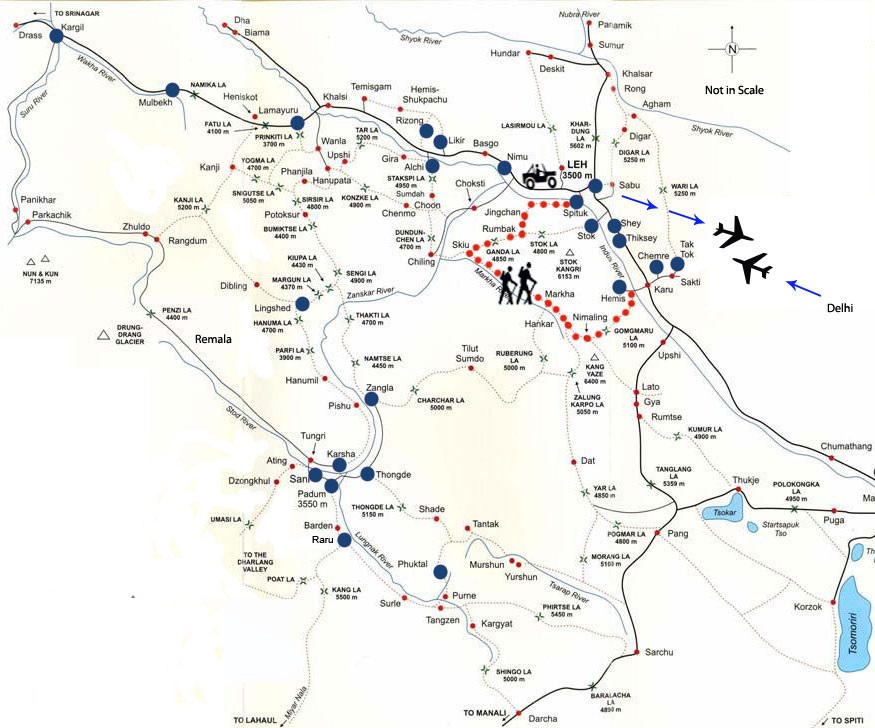 Source: dragontours.in
Source: dragontours.in
- The trek starts with a drive from Leh to Chilling from where one has to trek to Skiu.
- After an overnight stay at Skiu we continue to trek Markhaand then onto Thachungtse.
- After a nights rest we continue our journey to Nimaling.
- The final day of the trek will be toughest which includes gaining an altitude of 5130 meters while crossing over Kongmaru La and going down to a height of 3660 meters to Shang Sumdo from where one can get a bus Back to Leh.
5. Nubra Valley Trek
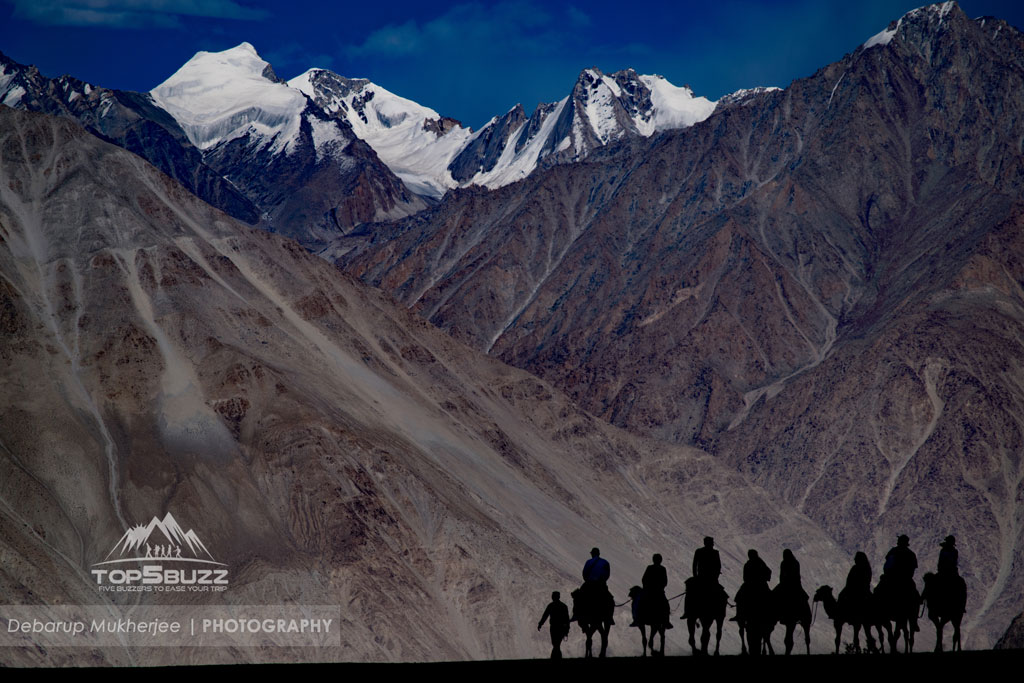 Nubra, the name of the valley and the town, is a valley located to the north east of Ladakh nestling between the tall Saltoro and Karakoram ranges. This region was made accessible to foreigners (non-Indian) only in 1994. Locally the valley is named as Ldumra that means the valley of flowers.
Nubra, the name of the valley and the town, is a valley located to the north east of Ladakh nestling between the tall Saltoro and Karakoram ranges. This region was made accessible to foreigners (non-Indian) only in 1994. Locally the valley is named as Ldumra that means the valley of flowers.
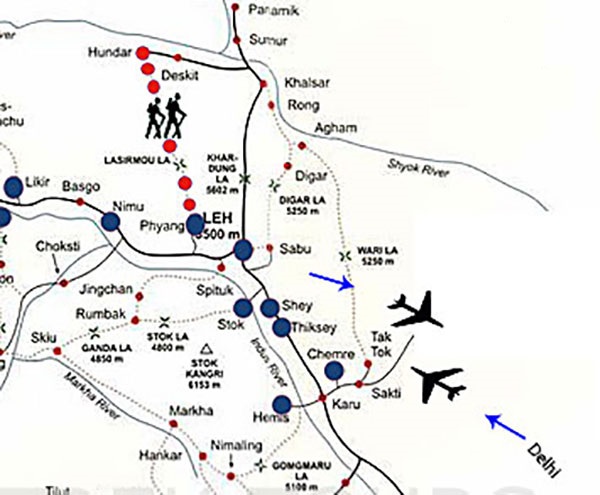 Source: dragontours.in
Source: dragontours.in
The flat and eloquent Nubra Valley is being criss-crossed along the Khardung La Pass granting the winding channels of the Shyok and Nubra Rivers.The Nubra Valley trek lies to the north of Leh which was once the gateway to the Silk Route. The valley has vast alluvial plains and Bactrian camels which roam the sandy banks of the Shyok River.
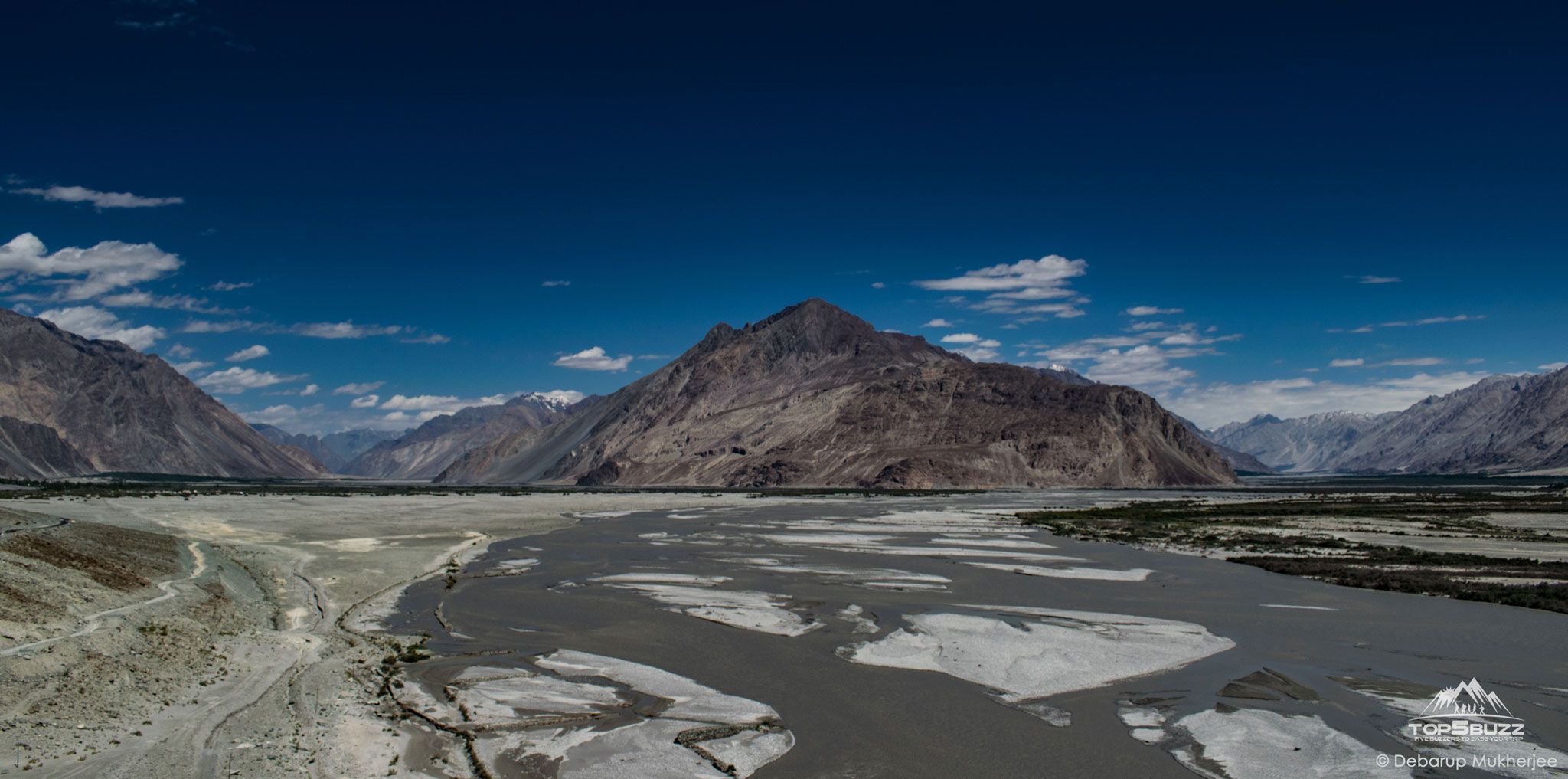 This trek visits what is considered by many to be the most beautiful region of Ladakh and will leave you reminiscing about its stunning views of the Karakoram ranges. You will be traversing along the world’s highest motorable road, the Kardung Pass 17,590 feet in addition to the hike up to the snowline via the Lasermo La Pass (17,716) from Phyang village.
This trek visits what is considered by many to be the most beautiful region of Ladakh and will leave you reminiscing about its stunning views of the Karakoram ranges. You will be traversing along the world’s highest motorable road, the Kardung Pass 17,590 feet in addition to the hike up to the snowline via the Lasermo La Pass (17,716) from Phyang village.
- The Nubra valley trek commences from Sabu village, which is at an elevation of 3,480 meters and is at a drive-able distance from Leh.
- The trek from Sabu ascends to Digar La at 5,500 meters and thereafter, ascends to Digar village.
- From Digar village the trek goes through River Shyok and heads to Agyam village.
- The journey then leads to Khalsar village and then the trail downhill follows to Diskit via Sumur.
6. Tsomoriri Lake Trek
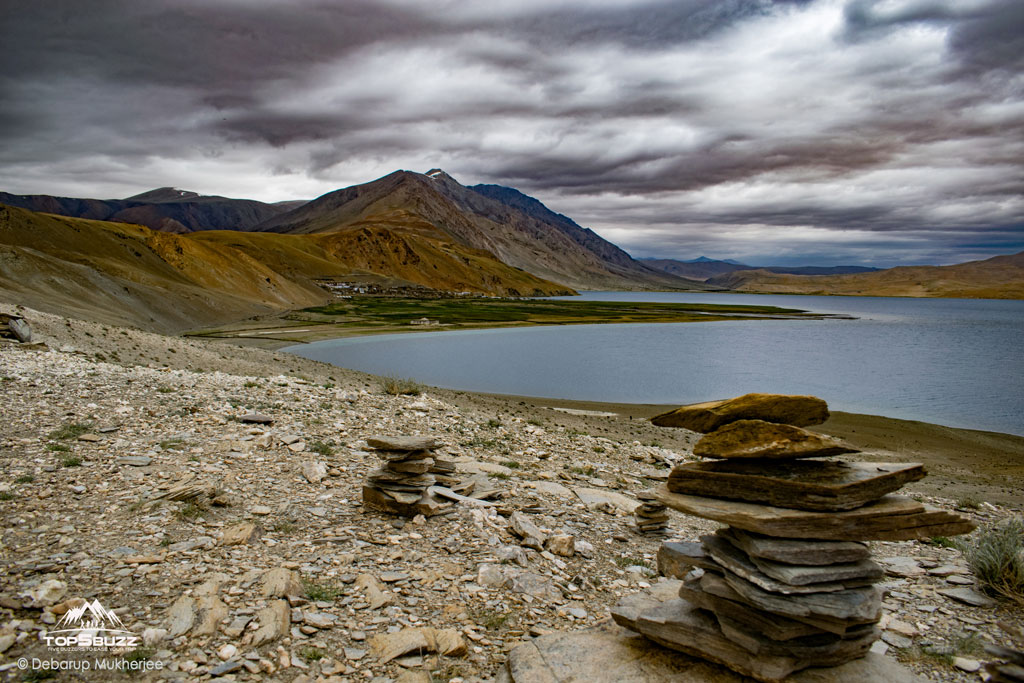 When it comes to lakes in mountain The Dal Lake and Pangong Tso lakes first come to mind. This is largely due to highlighting of these lakes by Bollywood. The Tsomoriri lake has gone unnoticed and its only known by hard core trekkers or those who have visited Ladakh in the past. Unlike the Pangong Tso lake, Tsomoriri lake is situated entirely in India.
When it comes to lakes in mountain The Dal Lake and Pangong Tso lakes first come to mind. This is largely due to highlighting of these lakes by Bollywood. The Tsomoriri lake has gone unnoticed and its only known by hard core trekkers or those who have visited Ladakh in the past. Unlike the Pangong Tso lake, Tsomoriri lake is situated entirely in India.
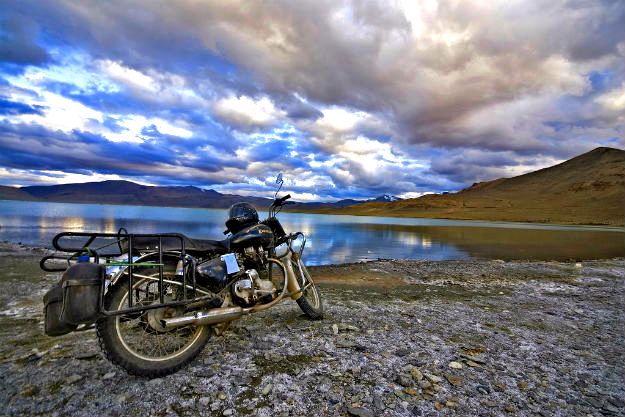 Tsomoriri lake treks offers a vast variety of terrains to its trekkers. One can expect to find marshes, vast meadows steep ascends & descends and crossing of 3 high altitude mountain passes during the trek. Also we can get to meet the Changpaswh are a nomadic tribe found in the region. The Changpas are cattle herders. Their livestock consists mostly of mountain sheep, yaks and Pashmina goats.
Tsomoriri lake treks offers a vast variety of terrains to its trekkers. One can expect to find marshes, vast meadows steep ascends & descends and crossing of 3 high altitude mountain passes during the trek. Also we can get to meet the Changpaswh are a nomadic tribe found in the region. The Changpas are cattle herders. Their livestock consists mostly of mountain sheep, yaks and Pashmina goats.
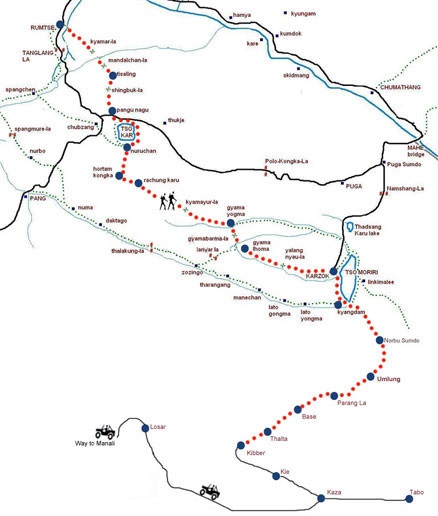 Source: dragontours.in
Source: dragontours.in
- The starting point of the trek is from Rumtse which is 70 km drive from from Leh. From Rumtse the trek route takes us to Kyamar (a small shepherd village), along the way one comes across 2 river crossings.
- After resting overnight at Kyamar it’s advisable to start early as one has to cross 2 high Altitude Mountain passes. These are Kyamar La (4870m) and Mandalchan La (4996m).
- From the top of Mandalchan La the campsite at Tisaling is visible.
- To get to Pangunagu which is our next destination, from Tisaling we have to cross the Shibuk La pass (5016m). The ascent is not difficult and from the top of the pass the entire Tsokar lake is visible.
- Yes the Tsomoriri lake trek gives one a chance to visit 2 lakes!
- The campsite at Pangunagu has a natural spring, which like most natural hot springs has said to have healing properties.Walking from Pangunagu to Nuruchan is easy as one has to hike along the periphery of the Lake.
- Nuruchan is on the eastern part of the Lake. From Nuruchan we head to the RachungKAru via Horlam kongka La pass. The Horlamkongka La pass is among the easier passes one encounters on the trek. Today is a long day.
- From Rachung Karu the day begins by ascending the Kyamayur La pass(5125m) which takes around two hours.
- From the top of the Kyamayur La pass the trail goes north east and there is a stream to be crossed. The trail starts ascending again and leads up to another small pass called Gyamai La (5100m). Once we descend from this pass we reach GyamaLhoma. All the hardships we have faced till now was to get to where we are.
- After resting overnight at GyamaLhoma we head for the fabled Tsomoriri Lake after which this trek has been named.
- To get to our final destination we must ascend to Yalangyugu La pass(5100m). The ascent is easy but quite long. The view from the top of the pass of Tsomoriri lake is amazing and is worth every penny spent and every drop of sweat perspired.
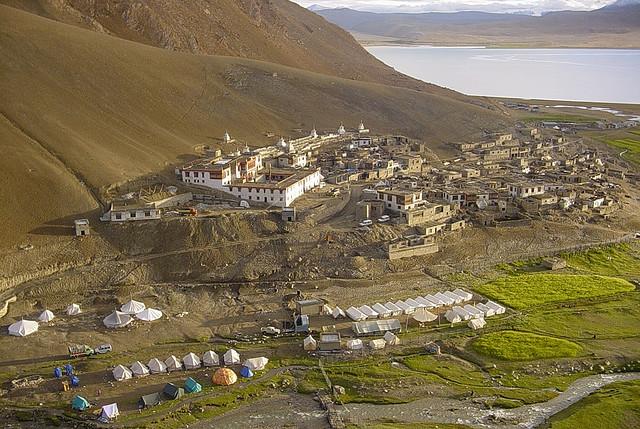
Source: Thinkingparticle.com
- The descent to Korzok village is steep. Korzok is the only human habitation at the edge of the lake except for some military installations present.
- At Korzok one can also visit the Korzak Monastrey. The Korzok monastery is 300 year old and is situated on the north western bank of the Tsomoriri Lake.
7. Snow Leopard Trek
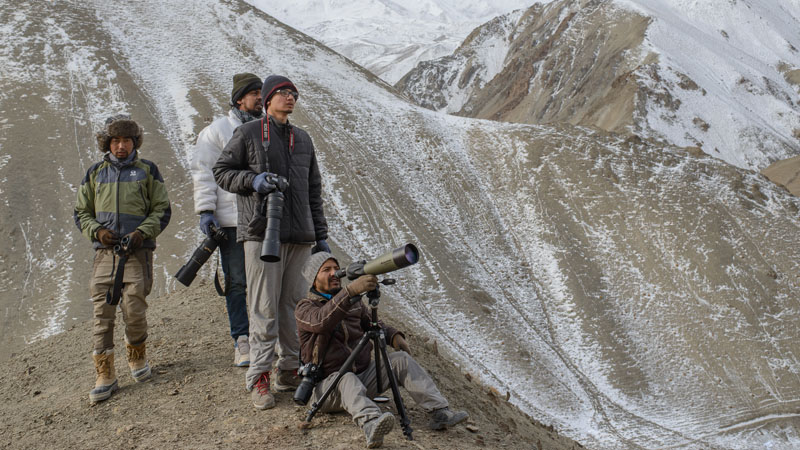
The Snow leopard trek is takes place in Hemis national park of Ladakh.This trek is meant for those who are purely interested in tracking and viewing the elusive snow leopard and various high altitude fauna. The Hemis national park is home to over 300 species of Birds and 30 species of mammals.
 This trek can be undertaken throughout the year, though the best time is during winters when the Blue sheep come down the valley. The blue sheep is favored prey of the snow leopard who follow them down from the upper reaches of the mountains during winters.
This trek can be undertaken throughout the year, though the best time is during winters when the Blue sheep come down the valley. The blue sheep is favored prey of the snow leopard who follow them down from the upper reaches of the mountains during winters.
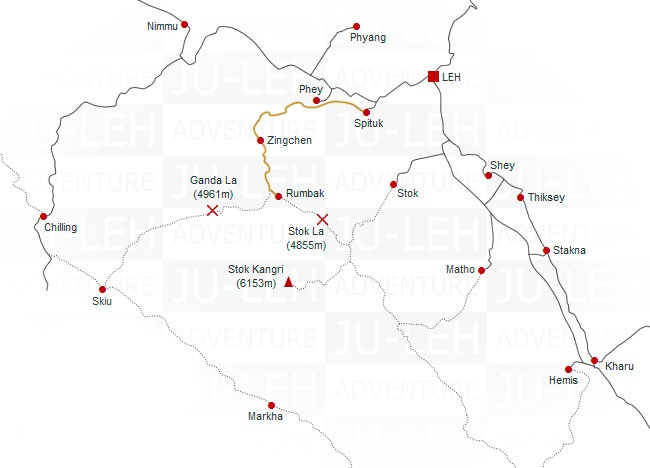 Source: ju-lehadventure.com
Source: ju-lehadventure.com
- The snow leopard trek starts from Zingchen, which is at a drive-able distance from Leh. Thereafter from Zingchen the trek goes deep into the wild where you may first get acquainted with the Tibetan wolf.
- The trekking trail descends along with the stream to the resplendent Rumbak gorge, where it finally meets Indus.
- The snow leopard trek leads to Rumbak Valley in the next couple of days where you can explore the folklore at the local villages and even experience a hospitable home stay.
- The trek downhill follows the same route and reaches Leh via Hemis Monastery.
8. Stok Kangri Climb via Markha Valley
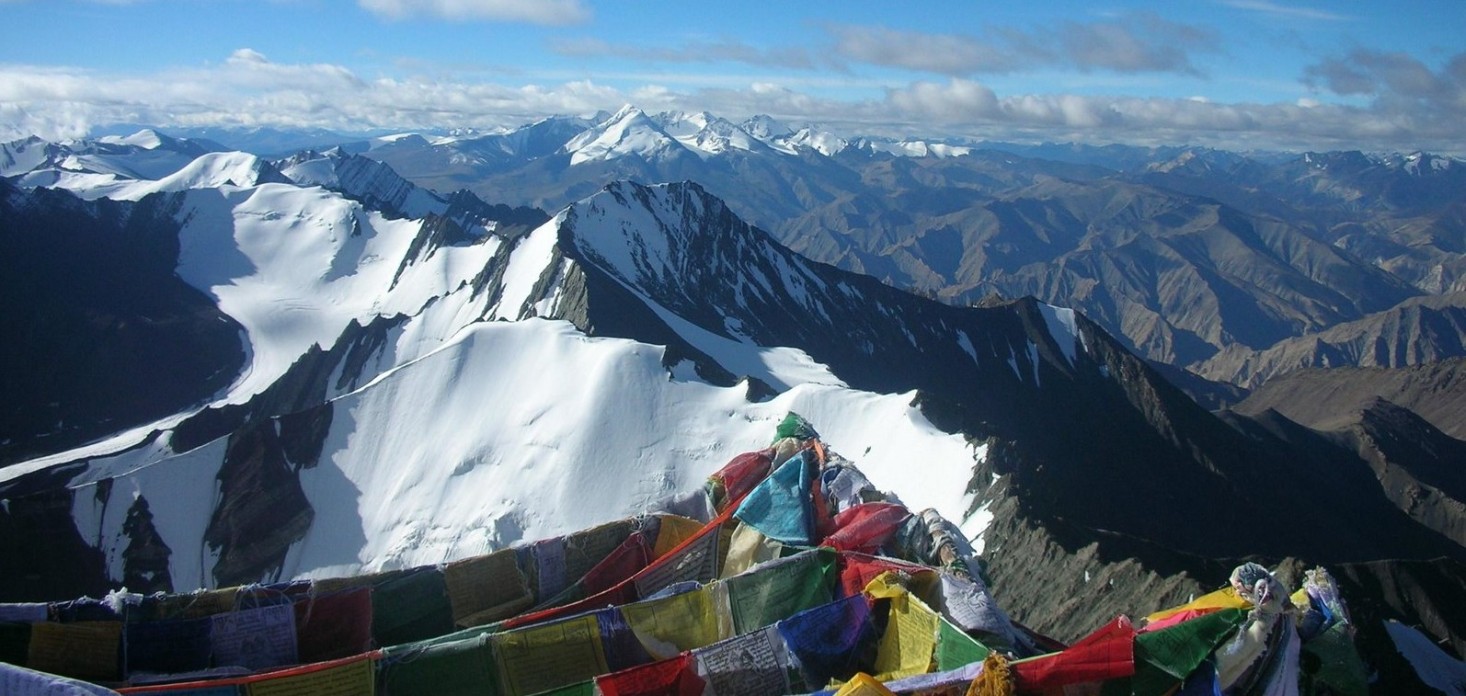
The Markha Valley trek and Stok Kangri climb in themselves maybe of moderate difficulty but if you were to combine the 2 we have the makings of adventure which isn’t meant for the weak of legs or the novice trekker.
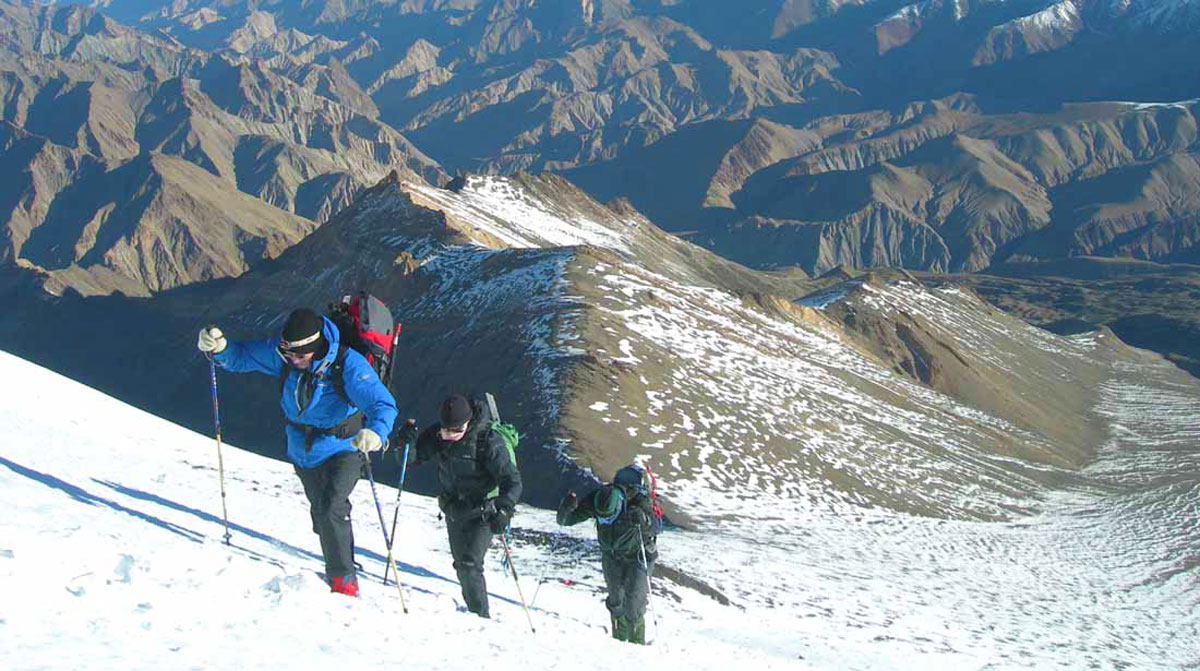
- The route followed is the same as that described above for the Markha Valley trek.
- Instead of returning back to from Shang Sumdho one heads to Maukarmo village via Stok village.
- After resting at Maukarmo Village we head to the Stok Kangri base camp.
- After a days rest and acclimatization at the base camp, to ascent the Stok Kangri Mountain and be back in time we leave base camp at 2 am.
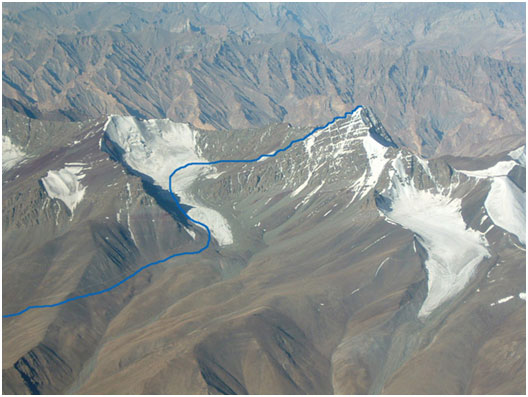
Note: Do not attempt Stok Kangri if you cannot spend at least 10 days in the mountains of Ladakh.
And do not attempt Stok Kangri if you do not have the physical fitness to endure a trek that climbs nearly 5,000 meters prior to the Stok Kangri trek.
What it means is you are going to do two very high altitude treks back to back. This requires a high order of physical fitness, for which preparation needs to start couple of months in advance. The Stok Kangri peak is located at the height of 6,150 meters and one shouldn’t take it lightly.
9. Chadar Trek
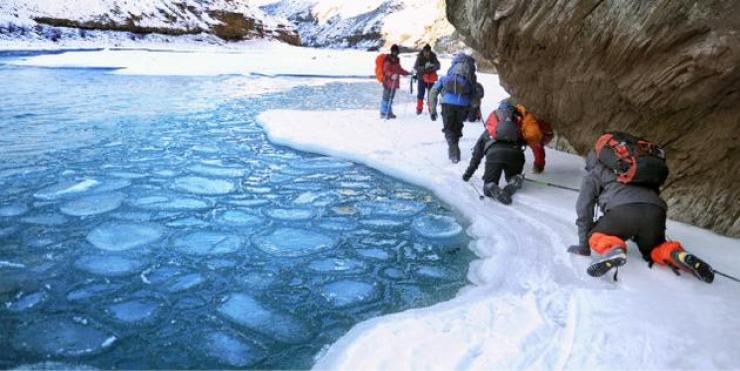
The Chadar trek is considered to be the grand daddies of all adventure treks in India. With maximum temperature reaching -10 degree Celsius and minimum dropping to as much as -40 degree Celsius this is the closest you can get to the Arctic circle without leaving India. Large sections of the river Zanskar, which is one of the mightiest rivers in Ladakh, freeze over in the dead of winter and are covered by a thick blanket of ice. This frozen blanket or Chadar is the only way in and out for inhabitants of Zanskar during the winter, when the roads and various other caravan routes are closed.
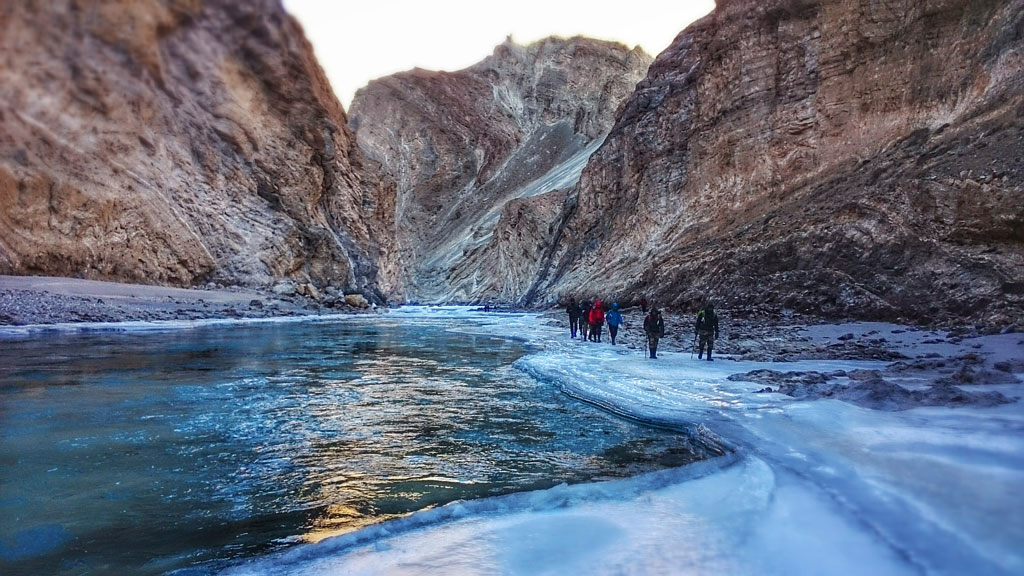
- The trek begins from the beautiful Chilling village which is 64 km by road from Leh.
- Moving towards Zaribago, Deepyokma, Nyarak Village, Nyarakpulu and then to a small village called Lingshed.
- From Lingshed, which is known for its monasteries, the trek further continues to TsoMopoaldar.
- In between we stop at Nyarakpulu, and then to Tilatdo and finally to Chilling.
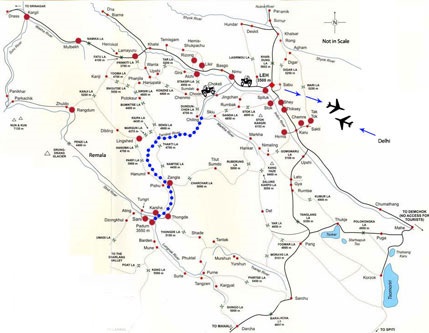 Source: dragontours.in
Source: dragontours.in
Due to blasting of a new road head and global warming it’s estimated that the Chadar trek will disappear in the next 5 years.
10. Trekking With The Indian Army
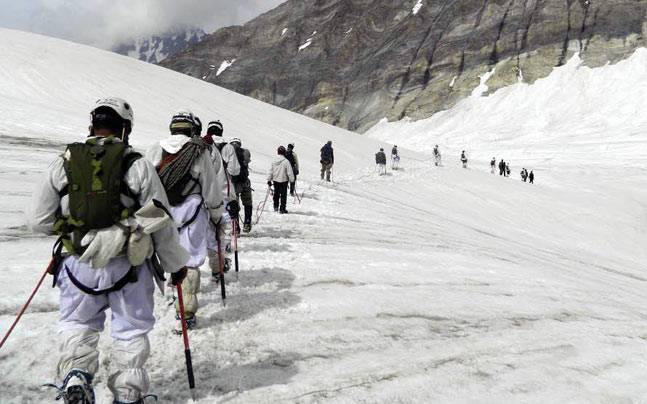
This is perhaps the grand-daddy of all trekking expeditions. The trek involves going to the highest, coldest and perhaps the most inhospitable battle field of the world. This is perhaps the only opportunity that civilians have to go trek upto Siachen. The route passes along the legendary Saltoro ridge which is a part of the K2 mountain system.
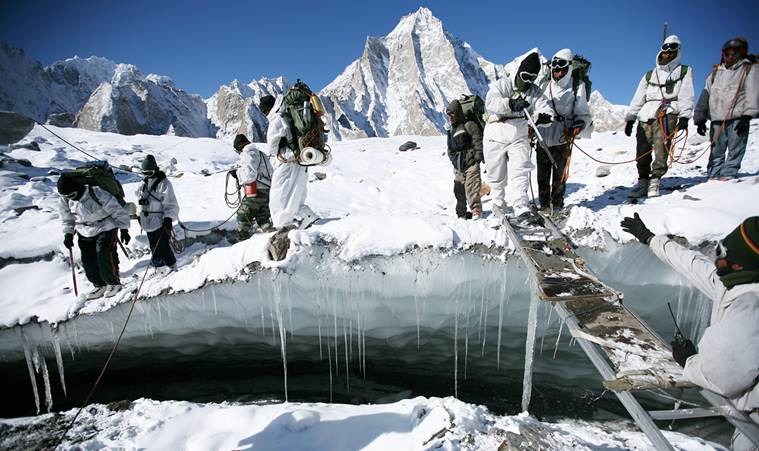
The trip starts From Leh. After resting and acclimatization in Leh for 3 days one has to undergo a physical fitness test. After you have passed this test you will be trained at Siachen base camp is situated at the snout of the glacier, on the bank of the river Nubra, at a height of 12,000 feet above sea level. The Siachen Battle school isn’t far from the base camp and bulk of ones training in snow and Ice craft will take place here. The drills here are heavily emphasis on team work and building physical fitness. No concessions are made what so ever because once you are climbing the mountains neither do they. After the ending of this training session another medical checkup is carried out.
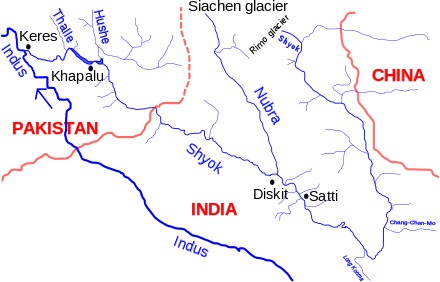 Once cleared you head to base camp 1 where you get the hallowed white Jackets and white boots one has been eagerly waiting for. From here we take the blessings of OP Baba. Legend has it that OP Baba was a soldier who went missing in the early eighties. Soldiers hold OP Baba in very high reverence. So deep rooted is that conviction that no soldier steps on the glacier without taking the permission and blessings of OP Baba at a shrine to him. Many do not drink alcohol or smoke once they have crossed the shrine and until they are back from their 90 day stay on the glacier.
Once cleared you head to base camp 1 where you get the hallowed white Jackets and white boots one has been eagerly waiting for. From here we take the blessings of OP Baba. Legend has it that OP Baba was a soldier who went missing in the early eighties. Soldiers hold OP Baba in very high reverence. So deep rooted is that conviction that no soldier steps on the glacier without taking the permission and blessings of OP Baba at a shrine to him. Many do not drink alcohol or smoke once they have crossed the shrine and until they are back from their 90 day stay on the glacier.
From Base camp 1 it’s a 12 hour trek to base camp 2. After resting there overnight and filling our pockets with chocolate and dry fruits we head out to our final destination that’s the Kumar Post which is some 60 kms away. It takes approximately 4 days to reach Kumar Post. The Kumar Post is named after the legendary Col Ngendra Kumar who in the 1978 undertook mountaineering reconnaissance expeditions he undertook in Teram Kangri, Siachen Glacier regions for Indian Army. It was because of the information he had collected that the Armed forces have a dominating presence on the Siachen glacier, due to which an entire post was named after him.
Note: Due to security reasons maps and further details of this particular trek aren’t available.
The trek takes place every every year in September and one has to be extremely fit and a citizen of India to be able to participate in it.
Those interested to do so can click on the link provided below to sign up. Selection is in first come first serve basis.
References:
*All treks traversing Hemis national pass need a pass which is available on entering the Park.
*All equipment for trekking can be rented from Indian Mountaineering Foundation: http://www.indmount.org/
Further details on the treks: http://www.jktourism.org/things-to-do/activities/trekking.html
Trek with Indian Army: https://www.indianarmy.gov.in/WriteReadData/Documents/AAW070113.pdf
References For Accommodations:
2. http://www.jktourism.org/accommodation.html


